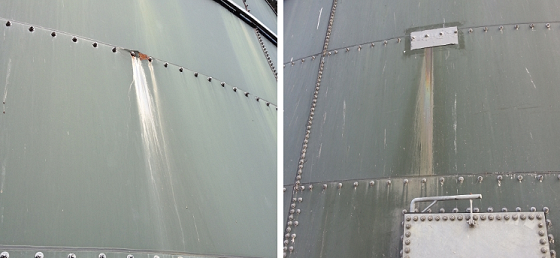The projected global growth in biomass plants poses distinct risks of corrosion, according to polymer repair composites and industrial protective coatings manufacturer Belzona (Harrogate, United Kingdom), which recently issued a paper outlining strategies to combat these risks.1
Biomass plants continue to grow in popularity because of their ability to reduce waste amounts and produce more sustainable energy, the manufacturer explains. The International Energy Agency (Paris, France) sees biomass generation expanding as more planned projects come online, with total global installed capacity expected to reach close to 140 gW by 2026. This growth is expected to be driven primarily by expansion in Asia, where residues from food production and the forestry processing industry are used.
Like most industrial assets, however, some elements of each biomass plant can be affected by corrosion. The fermentation and oxidation processes used by the anaerobic digesters (AD) create a perfect recipe for corrosion, the manufacturer explains, both at the gas and liquid phase.
Internally, ADs are typically protected by a glass lining. Meanwhile, sludge tanks can face other corrosion issues and maintenance challenges. According to the manufacturer, the appropriate corrosion management strategy can vary based on the unique needs of each individual location.

Glass Linings
The aforementioned glass-lined steel can provide superior corrosion resistance to acids, alkalis, water, and other chemical solutions. Exceptions include hydrofluoric acid (HF) and hot concentrated phosphoric acid (H3PO4).
Based on this chemical resistance, glass linings can serve for many years in environments that would quickly render most metal vessels unserviceable.
But at higher temperatures, glass is not as effective against alkalis, where an increase by 10 ºC can double the rate of attack on glass. Additionally, as a glass lining provides protection to the extremely aggressive environments, its costs are directly proportional. The glass linings are also very susceptible to impact damage, and repairs can be costly, according to the manufacturer.
Application Errors
One source of corrosion can result from application errors and mechanical damage during the initial installation, which leads to pinholes within the glass lining.
Aggressive chemicals produced during the anaerobic digestion process then “attack” the steel, the manufacturer explains. From there, corrosion can set in very quickly, both at the liquid and gas phase.
The manufacturer says it commonly see defects around the size of 1-cm (10-mm) in diameter, which quickly goes through the wall and leads to the escape of liquid digestate or methane (CH4).
Maintenance Considerations
The biogas produced by an AD consists primarily of combustible gases in the form of CH4 and carbon dioxide (CO2). At normal atmospheric conditions, the in-air volume concentration of CH4 to form an explosive mixture is between 5%—representing the lower explosive limit—and 15%, which marks the upper explosive limit. This can be readily ignited by sparks from welding and maintenance operations, or even by static electricity discharge.

As a result, the potentially explosive atmospheres mean that welding repairs are often not suitable for biomass plants. In addition, welding could damage the internal glass lining, leading to its disbondment.
Based on the welding hazards, solutions that are applied and cure at ambient temperatures are often considered. As one example, 100% solids epoxy paste grade systems can be used to patch repair defects in the glass lining on the inside or to bond plates on the outside of the AD tanks to seal live leaks.
According to the manufacturer, epoxies are known for their excellent adhesion to a variety of substrates, including both steel and glass linings. The absence of solvent within the polymer matrix makes them safe to use in confined spaces and prevents shrinkage during cure.
Material Selection
Epoxy composites are now being supplied as a two-part system with base and solidifier stored in separate modules, the manufacturer explains. Once mixed, the hardening process starts and the material ultimately cures, thus sealing leaks or preventing any defects from going through the wall. By their nature, epoxies do not corrode and will protect the steel from any further attack.

The company cites its Belzona 1111† as an example of a suitable two-part, epoxy-based repair composite product that could work on such applications.
In terms of using epoxy adhesives to restore asset integrity, prefabricated composite patches are also being considered in place of metal plates, according to the manufacturer, which says using a non-metallic solution ensures the repair is lightweight and has no potential for corrosion.
Based on results to this point, the manufacturer says this style of application is becoming a preferred choice for water treatment sludge tanks, among others. They say it could also be considered for AD maintenance.
†Trade name.
Source: Belzona, www.belzona.com.
Reference
1 “Sludge Tank and Anaerobic Digester Corrosion Maintenance,” Belzona Educates, Nov. 27, 2018, https://blog.belzona.com/tank-anaerobic-digester-corrosion (Jan. 17, 2019).